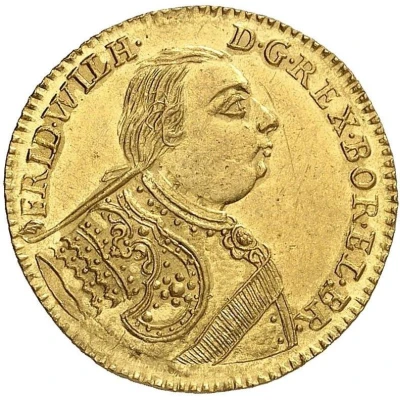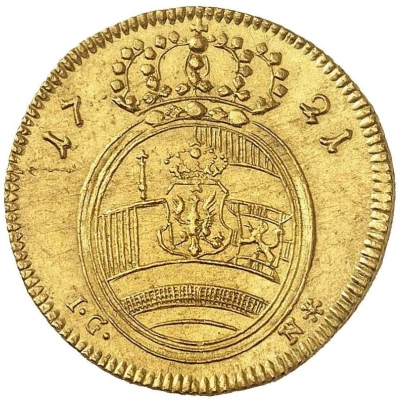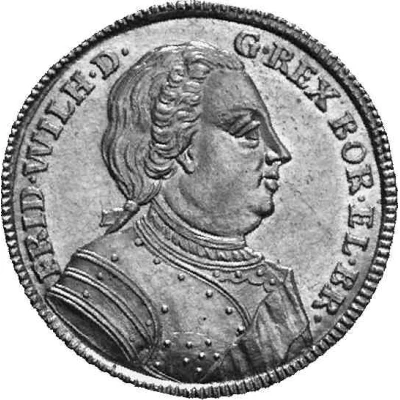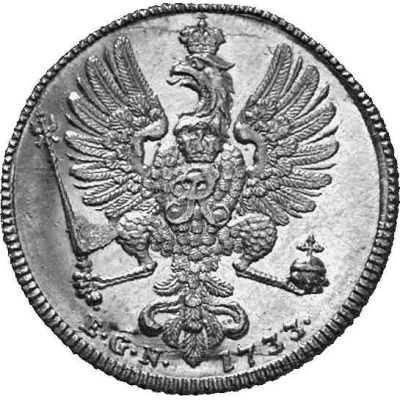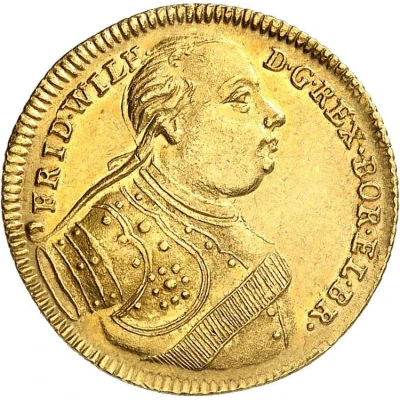
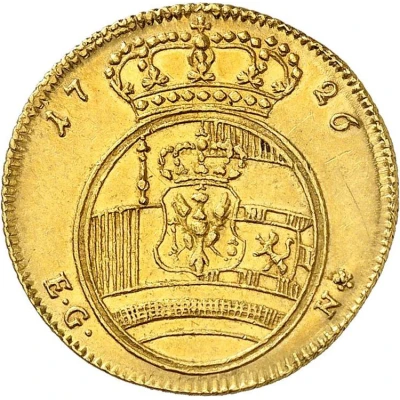

© Fritz Rudolf Künker GmbH & Co. KG, Osnabrück and Lübke & Wiedemann KG, Leonberg
1 Ducat - Frederick William I
| Gold (.986) | 3.46 g | - |
| Issuer | Kingdom of Prussia (German States) |
|---|---|
| King | Frederick William I (Friedrich Wilhelm I) (1713-1740) |
| Type | Standard circulation coin |
| Years | 1725-1732 |
| Value | 1 Ducat (1 Dukat) (3.5) |
| Currency | Thaler |
| Composition | Gold (.986) |
| Weight | 3.46 g |
| Shape | Round |
| Technique | Milled |
| Demonetized | Yes |
| Updated | 2024-10-05 |
| Numista | N#199102 |
|---|---|
| Rarity index | 100% |
Reverse
Crowned oval shield with coat of arms of Prussia.
Script: Latin
Lettering:
17 26
E · G · N +
Comment
Varieties are known to exist:• Variety 1726:
Obverse: Nine rivets on the rounded shoulder plate on the King's chest armour.
• Example: the coin in the main image (3.46g, Extremely Fine):
◦ Auctioned by Fritz Rudolf Künker GmbH & Co. KG, Auction 331, 30 January 2020, Lot 15. Sold for 3,800 EUR.
◦ Auctioned by Fritz Rudolf Künker GmbH & Co. KG, Auction 125, Osnabrück, 2007, Lot 852.
• Variety 1728:
Obverse: Lily brooch on the right of the King's chest armour.
• Example (3.46g, About Extremely Fine):
© Fritz Rudolf Künker GmbH & Co. KG, Osnabrück and Lübke & Wiedemann KG, Leonberg
◦ Auctioned by Fritz Rudolf Künker GmbH & Co. KG, Auction 331, 30 January 2020, Lot 16. Sold for 3,400 EUR.
• Variety 1730:
Obverse: Nine rivets on the square shoulder plate on the King's chest armour.
• Example (3.47g, About Uncirculated):
© Fritz Rudolf Künker GmbH & Co. KG, Osnabrück and Lübke & Wiedemann KG, Leonberg
◦ Auctioned by Fritz Rudolf Künker GmbH & Co. KG, Auction 331, 30 January 2020, Lot 17. Sold for 3,200 EUR.
◦ Auctioned by Fritz Rudolf Künker GmbH & Co. KG, Auction 201, Berlin 2012, Lot 138.
Interesting fact
The 1 Ducat coin featuring Frederick William I of Prussia was minted during a time of great economic and military growth for the Kingdom of Prussia. The coin's gold content and intricate design were meant to symbolize the kingdom's increasing wealth and power, and it was used as a means of promoting Prussia's economic and political interests both domestically and internationally.
